page 14
Progressive Thinkers as of 5/8/2020
|
| ||||||||||||||||||||||||||||||||||||||||||||||||||||||||||||||||||||||||||||||||||||||||||||||||||||||||||||||||||||||||||||||||||||||||||||||||||||||
Let us also contemplate the occasion for other two-patterned concepts. For example, should we be swayed by a supposed deeper antiquity involving the development of the two-patterned Yin/Yang complementarity/complementarity juxtaposed with a collection of supposed I-Ching triads (which are actually repetitious Biads posing as triads: Trigrams page 1.)? And we further overlook any accompanying pattern such as a three and/or four used in later ages such as the seven represented by a Trivium (grammar, logic, rhetoric) and Quadrivium (arithmetic, astronomy, music, geometry):Clearly there are patterns within patterns and many which are hidden by symbolism as well as the symbolism we call language. Just like Linguists who are dismissive of the importance which hearing plays and that the human ear has a recurring assortment of a three-pattern, cognitive scientists hold greater stock in "feeling words" (expressions about how one feels), all because the public has been taught to describe and analyze themselves and others with this formula of accountability, though below those specious references lay fundamental patterns which can be enumerated and thus be used like tree rings to determine the state in which humanity is being subjected, as the overall environment incrementally deteriorates and humanity is forced to attempt some measure of adaptation which will eschew the different types of cultural embellishments being reflexively used as coloring, contradiction, and camouflage.
While mores and manners are developed to channel baser instincts into less destructive avenues of culturally choreographed traditions, values, and expected age-appropriate practices that can become ritualized and described as either developmental stages, rites-of-passage or some socialized accountability of ideological transference described as maturity; a dwindling resource base brought on by increasingly restrictive laws needed for increasing populations both in and out of incarceration will bring about increasing levels of decreased embellishments of baser natures, in the domains of language, physical behavior and mental exercises. The guiding rationale will be rationalization such as the U.S. government officials labeling the country as a Democracy on the one hand and then when this is not profitable, calling itself a Republic. So too will other countries call themselves a Democracy, because this is the general mood of the world's publics, though Democracy will have more flavors than the 3 different octane ratings offered at some gas (petrol) pumps (with diesel viewed as a fuel oil, making the complement an overall 3-to-1 ratio of fuels).
A Standard Cognitive Model is established after a survey is made of the many recurring number patterns being exhibited by humanity from its multi-various sources, though some patterns are clearly of a faddish cultural nature and others are established as laws of nature. Like the profile of chemical elements and the profile of crystal formations, or a profile of cloud types, or a profile of vehicle types, or beer/wine/liquor types, etc., we can establish a graph which gives us an account of a basic cognitive profile and its variances from one culture to the next, though some patterns remain the same such as observances of Natural laws. While one person may use multiple numbers in the daily work like an accountant, we need to note that they may use a formula such as a double or triple-entry accounting formula. So too a person may have a large vocabulary but restrict themselves to holding a pencil or pen with three fingers and ending each sentence with a period, a question mark, or an exclamation point. A person may use three-patterned expressions more than two, The point is, there is a narrow range of patterns which occur and have occurred over time. Whereas you may see the expression "1,111" as four numbers, I see it as a 3-to-1 ratio based on a larger set of examples from multiple subjects. Likewise you may say the number seven is most important because your sampling range is limited to what others have said concerning religion, or you have seen lists of seven-patterned-examples compiled by others and use them as a means to substantiate your claim without ever creating a list for yourself where both quality and quantity as well as subject are used as variables in you defining equation.
If you are one who claims they can develop a list to compete with any threes listing, by all means, please do so and provide me with a copy. The same goes for the number two or any other number. And while you are at it, take a look at the small amount of numbers being used as recurrences of thought processing in the different subjects, many of whom simply take the ideas from others subjects but use different words to describe a similarity or the same thing. Another point is for you to establish yourself as your own Devil's advocate and ask yourself why you don't find your particular number(s) of interest everywhere if they actually are that important... and yet find an overall limited set of numbers suggesting a limitation to human cognition and that this limitation may be the result of an environmental enforcement as a survival requirement under incrementally deteriorating conditions.
Over the several decades of my life I have been collecting different representations of three-patterned perspectives from different subject areas. However, one might do the same for different number labels such as patterns-of-one, of two, of four, of five, of six, of seven, and so forth. Curiously though, even when Numerologists make their own collections of enumerated patterns, no one steps back and assesses the very real point that there is a limitation to the quantity and quality of numbers being used. Some are used frequently, while others less so and some very rarely or can be deduced as an isolated activity by a particular group of people or subject genre. There not only is a limitation but certain patterns re-occur with a greater frequency then one might say is due merely to chance or coincidence. Whereas some may prefer not to enumerate patterns, many of us do... just like it was necessary to use an enumerated system of cataloguing as more and more books on a variety of subjects became written and stored in libraries. And even though a person's personal library may not have a card catalogue attached to it, though they may have several hundred books, there is inevitably some method of sorting which takes place to suit the needs... or whims, or interests of a given document collector (be it books, music, recipes, movies, games, tools, etc...).
Whereas the existence of different species is an exercise in hybridization, it also is an elaboration of underlying basic patterns such as DNA's Triplet code. A code that one might argue is exempt from... or at least participates in its own model of evolution so as to limit the species of patterns to be associated with it. In other words, one would think that after more than a billion years, DNA would not have a triplet code but some other one, unless it was established when a significant pattern of three existed in the environment at the moment and time when biology was in an imprintable/impressionable stage of development, and the existing pattern-of-three code is a foundational sire like the three foundation stallions from which all thoroughbreds are said to be descended from through which they have three direct-line descendants as well:
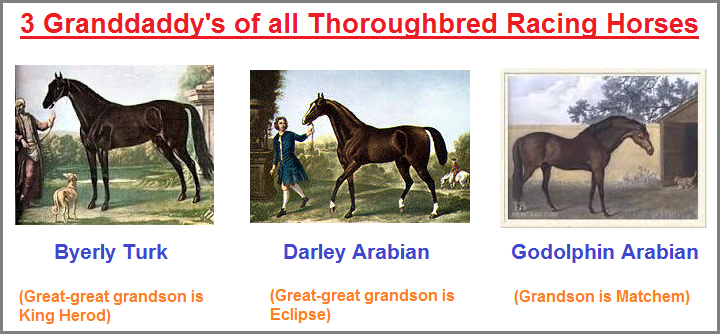
(re-sourced from:) Devil's Advocate 11
But the triplet code pattern in DNA sits next to other patterns such as a double helix architecture and there is an underlying atomic element code to these patterns. While it is at present being considered that Quarks are the bottom (fundamental) or surface structure for all particles, whether you believe this or not... overlooks the point about looking for and identifying patterns which may exist amongst other patterns in a crowed room whose features might look like a costume ball, or find that some pattern is not in a room but off wandering by itself and engaging in behavior which gives the impression that it is in motion due to some internal and/or external reason or reason-less means. A pattern may not be like a life form that is actively seeking shelter, companionship, food, water, etc... It may simply look like it's engaging in one or another (normal, common, typical/atypical) activity as a tool in its repertoire of hiding out... in this case, hiding out in plain sight. Many a person has engaged in hiding out by intermingling, but are never in one place long enough to be pointed out. An idea expressed in Schrödinger's The Uncertainty Principle.
The common expression of "One moment a person was there, the next moment they're gone", aptly describes some people as if they were (playing dodge ball) particles, and may be where Schrödinger came up with his idea (observing people at a party). Like particles, people like to group, gravitate, revolve around and flitter about like social butterflies or moths... or predatory mosquitoes or flies that have a gift for make a nuisance of themselves like eye irritating smoke from a campfire. All of which can exhibit individual as well as collective patterns, not to mention anomalous ones. (I must add that if the Uncertainty Principle is a certainty, then there can be no Uncertainty Principle.)
There are several basic anatomical configurations which are used by many different life forms. Animals for example, exhibit the Pentadactyl limb, which (for me) represents other patterns directly concerned with how humans find themselves thinking about different subjects. A good example of using a similar type of thinking is found when people address the activity of putting a picture puzzle together. Due to the design limitations, there are only a few ways in which puzzles are conventionally put together. Let me provide a short list of approaches you may (or may not) use:
- Put all the edge pieces together.
- Fit pieces one-by-one together by way of shape.
- Fit pieces one-by-one together by way of color or assume representative content.
- Arrange pieces according to some acknowledged inclination.
- Arrange pieces according to some unacknowledged inclination.
- Work from one side or one corner at a time.
Granted, there are alternative approaches, but all the approaches are limited due to the constraints of the puzzle itself, whereby similar types of thinking about the same problem occur again and again. The same goes for "puzzles" in physics, sociology, mathematics, music, sports competitions, biological development, architectural design, government planning, religion, gaming, grocery shopping, driving, etc... They all have constraints due to their inherent designs which tend to influence where, when, why, how (and perhaps even by whom) a given topic will be discussed, researched, contemplated, etc... In short, there are underlying patterns even if someone does not readily see them, but may nonetheless react to them and behave accordingly. (I include the "whom" because it appears certain types of people are inclined to gravitate towards a given activity.) We are constrained to think in routine ways due to Natural laws, human-made laws and personal impositions.
(Although the following paragraph occurs on a previously written page in this series, let me include it here because as I was re-reading it, some additional thoughts came to mind.)
I look for basic patterns amongst all subjects, though I generally focus on only a few, since the patterns being identified are verifiable and do not rely solely on belief such as patterns found in the ideas of many religions and alternative philosophical considerations. One such subject where information can be routinely found to be reliably recurring and verifiable is Biology... though even this field of research has exceptions and is not without controversies due to varying perceptions and interpretations thereof. In the following illustration, we see the description of a recurring (basic) 2/3 biological development plan amongst animals, in the form of two body cavities and 3 germ layers, even though one might want to argue that plants include this same pattern such as the three "root- shoot/stem- organs" (leaves- flowers- fruits)... and the preceding two-part clustering of cells during the initial genesis of the plant's development... depending on one's orientation to such a developmental process. Nonetheless, the "3/2" pattern is found in multiple other subjects as well such as for example in the three basic particles of atoms (protons-neutrons-electrons) along with the presence of two-patterned ideas such as the wave and particle identity (though the idea of a transitional or sharing state of existence is not a typical topic of discussion.
It is of some interest to note that while we readily except the view that some life forms such as crustaceans have their skeleton on the outside (an exoskeleton) in contrast to the skeleton found on the inside of multiple animals (called an endo-skeleton); the idea of a life form having external organs is not a view commonly expressed. And when I say life forms I also include plants. But we should not be surprised to find the usage of a "flip-flop" mechanism being used as an expressed usage of a dichotomous pattern by Nature. For example, the Earth itself does a flip-flop with respect to its geomagnetic orientation called reversals. Likewise we find snow falling in desert regions and heat waves in cold climates. Other dichotomies can be expressed in a short list that I am sure the reader will be able to add one or more to if so inclined.
- Earth's geomagnetic field "flip-flops" but is labeled a "reversal"
- Humans can have "dual" personalities sometimes called bipolar.
- We have alternating seasons of weather phenomena such as summer/winter and spring/fall.
- We have low and high tides.
- We have hot/dry climates and cold/wet climates.
- We have "polar" ideas such as the yin/yang concept, though multiple others exist.
- We experience both life and death.
- Levrorotary (left spinning) and Dextrorotary (right spinning) chemistry and other events.
- One/Many instances are variously described such as singularity/plurality, monism/pluralism or monism/dualism, etc...
- Horns on top of the skull/ "horns" called tusks on the bottom of the skull called the jaw.
- Four legs beneath the body/ two legs become upper arms which may also be used as wings.
- Protostomes: Mouth develops before anus/ Deuterostomes: Anus develops before Mouth
- Totipotent stem cells (full organism development)/ Pluripotent stem cells (most or all cell types are developed but not an organisms)
- Day blooming plants/ Night blooming plants
- Carnivorous plants/ Glucose eating plants (via photosynthesis)
- Plant milk/ Animal milk
- Poisonous/ non-Poisonous (plants and animals)
- etc...
In many different cases, what we see is that someone may think alternatively by simply flip-flopping information around, though such a perspective is sometimes reacted to as if it were some god-granted revelation instead of calling someone a liar, hypocrite, two-faced, cheater (using a bait and switch tactic), sleight-of-hand "artist", creative accountant, etc... As previously listed, an example of this flip-flopping in biology is noted when the mouth and anus are developed in Protostomes (mouth before anus) and Deuterostomes (anus before mouth) during embryogenesis.
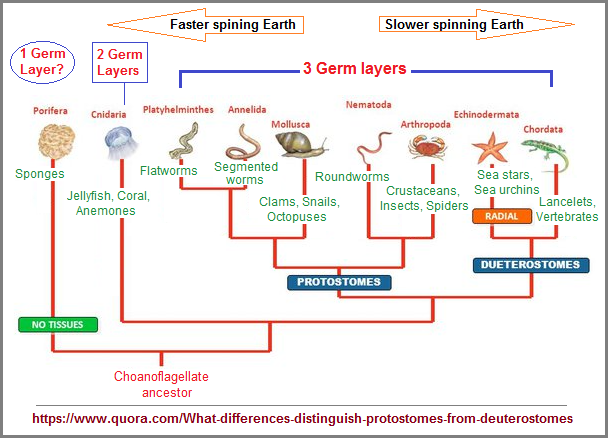
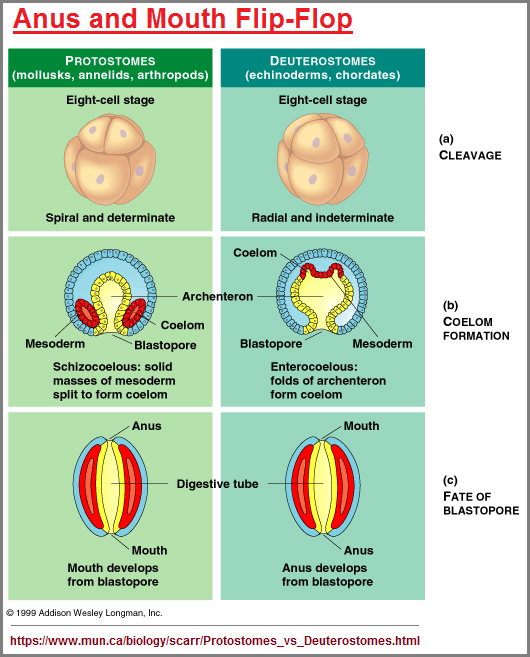
By using the same information, one can use different types of displays which represent a schematic diagram of a person's thinking orientation. In one example we find a left to right display and in another example we find a top to bottom (or bottom to top view if you prefer), along with inclinations towards as different emphasis. Here are additional examples of the same information exhibited in different ways:
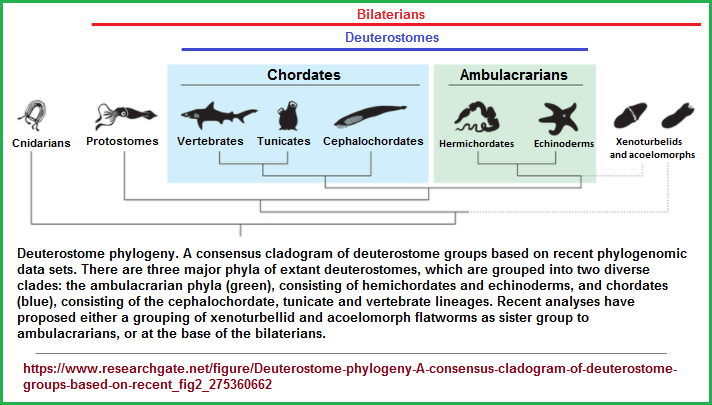
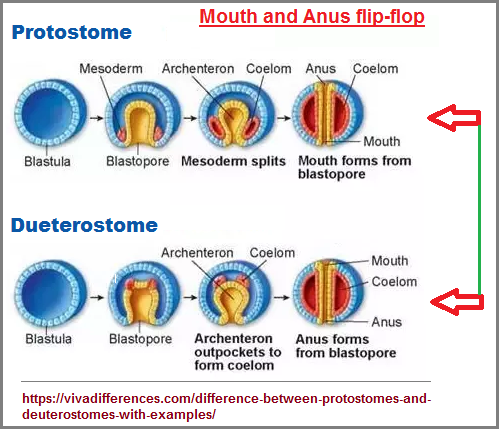
Date of (series) Origination: Saturday, 14th March 2020... 6:11 AM
Date of Initial Posting (this page): Saturday, 6th August 2022... 1:44 PM